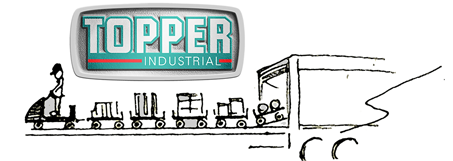Fork Truck Free News – November 2, 2015 – Volume 1, Issue 1
Warehousing Costs Increasing Rapidly
Dustin Braden, Assistant Web Editor for the Journal of Commerce recently report that NJ warehousing vacancies lowest since before recession. Vacancies for warehouses and distribution centers in the “red hot” New Jersey market dropped to 7.2 percent in the third quarter, the lowest rate since the recession took hold in 2007. The low vacancy rate and rising rents mean that shippers using the Port of New York-New Jersey, the second largest U.S. container gateway, may soon be facing higher costs. Average rent per square foot rose 4.4 percent year-over-year, to $6.42, in the third quarter as the overall New Jersey vacancy rate fell by 1.1 percentage points, according to a new report from real estate research firm Cushman & Wakefield.
In northern New Jersey, home to the largest container terminals in the New York-New Jersey port, rent per square foot rose 5.5 percent, to $6.88, as vacancies fell to 7 percent from 7.5 percent a year earlier. The third quarter was the 11th straight quarter in which demand outpaced new supply, said Jason Price, research director, tri-state suburbs for Cushman & Wakefield. Price said a strengthening economy, healthy retail sales, and growth in e-commerce were the major drivers of the tight market. These higher prices are driving the increased adoption of Fork Truck Free warehouses. Learn more .
Fork Truck Free Lowers Operating Costs by Reducing Maintenance Expenses
One of the key benefits of going Fork Truck Free is a reduction in the maintenance costs for fork trucks. According to Jeffrey Cohen in IMPOmagazine, as the manufacturing and construction sectors continue to grow with the recovering US economy, demand for a variety of material handling equipment has risen. Factors that contribute to price growth for material handling equipment include the industrial production index (IPI), which measures output across manufacturing industries; the value of construction, which depends on the level of construction activity; and equipment users’ ongoing need for higher productivity.
Although the price to acquire the equipment is important for buyers to consider, there are other long-term costs outside of the equipment purchase price that buyers should also take into account before finalizing their purchase. These costs relate to owning the equipment over time and have been on the rise during the past three years. As such, IBISWorld has identified several of these ownership costs and provides insight into how buyers can reduce them. Price increases for pallet trucks and forklifts have been moderate at estimated annualized rates of 2.9% and 2.0%, respectively. Three significant cost of maintenance is frequently forgotten.
Maintenance costs are substantial. Given the nature of the tasks performed in the manufacturing and construction sectors, pallet trucks and forklifts are frequently exposed to hazardous conditions that accelerate wear and tear. The actual amount that a buyer pays for maintenance services depends on a variety of factors, such as the age of the vehicle, the condition of the vehicle, the setting it is used in and the number of operating hours it accrues on an annual basis. The annual maintenance cost for a new gasoline-powered forklift that accrues 2,500 operating hours in a year is about $1,500. For an electric forklift, this figure is about $500 per year. Learn more.
Fork Truck Free Reduces Work in Progress at Manufacturing and Assembly by 75%
In a recent case study, with a major manufacturer, several findings resulted:
- Savings on fork truck maintenance, warehousing and economically more efficient material handling
- Overall traffic has decreased (all remaining fork lifts and tuggers abide by one way traffic)
- Flow of material handling operations has become transparent
- WIP at manufacturing and assembly reduced by 75%
- Elimination of rack storage equals added manufacturing space (4,000 sq ft)
- Elimination of up to 66% of fork trucks being used
- Displaced fork truck drivers moved to tugger driving position and/or new value-added positions
- Reduced 23 passes per day down to 5 passes per day using planned tugger schedule
- Learn more. Find original article here.


